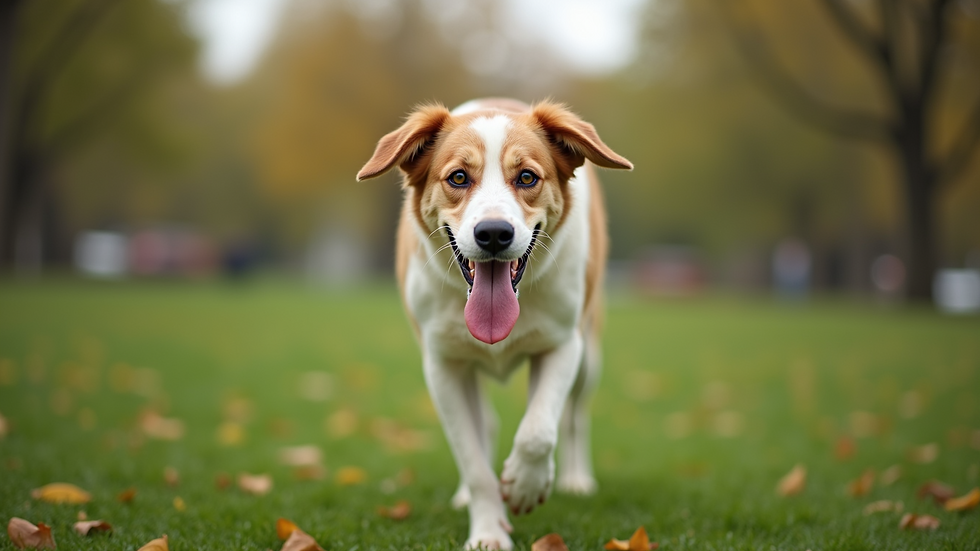How to Address Poor Socialization and Fearfulness in Your Dog for a Balanced Life
- DaMon Clemons
- Jul 17
- 4 min read
Updated: Jul 22
Dealing with poor socialization and fearfulness in dogs can be a challenging experience for many pet owners. Whether it's due to a lack of early exposure to different people and environments, negative encounters, or an individual temperament, these issues can negatively impact your dog’s behavior. A well-socialized dog not only enjoys a happier life but also contributes to a more harmonious atmosphere at home. This guide offers you engaging strategies to help your dog thrive and build a balanced life.
Understanding Poor Socialization
Poor socialization occurs when dogs do not receive adequate exposure to various people, animals, and environments during their crucial formative months. Statistics show that 37% of dogs exhibit anxiety-related behaviors, especially when they lack early social experience.
Puppies are particularly sensitive to social interactions, and significant exposure during their first three to four months can set them on a positive path. Without proper socialization, dogs may grow up fearful or overly aggressive.
Consider positive socialization methods:
Introduce Various People: Allow your dog to meet friends, children, and seniors.
Engage with Other Dogs: Arrange play dates or visit dog parks to help your pup interact safely with their peers.
Explore Different Settings: Frequent places like pet stores or cafés where dogs are welcome to help your pet adjust to different environments.
Recognizing Fearfulness
Fearfulness may show up in various forms: your dog might cower, bark excessively, or even act aggressively in unfamiliar situations. A recent survey indicated that over 60% of dog owners noted signs of fearfulness in their pets, especially concerning loud noises like thunderstorms or fireworks.
Owners need to identify these behaviors early. Understanding that a dog's fear often stems from past negative experiences allows for a more empathetic and strategic response. For example, a dog that was previously attacked by another dog may react fearfully when they encounter a similar breed.
Building a Safe Environment
Creating a secure and calming space at home can have a significant positive effect on your dog’s behavior. Here are effective strategies:
Designated Safe Zone: Create a quiet corner in your home with a comfortable bed or blanket where your dog can retreat.
Comfort Items: Include your dog’s favorite toys or even an old t-shirt of yours to provide emotional comfort.
Calm Atmosphere: Reduce disruptive noises, like loud music or shouting, to foster a peaceful environment.

Gradual Desensitization
Desensitization is all about introducing your dog to their fear triggers in a gradual and controlled manner, helping them learn to manage their fear over time. Here are key steps to take:
Identify Triggers: Maintain a journal to track which situations cause your dog stress, like loud noises or the presence of unfamiliar dogs.
Start Small: Begin exposure with mild situations. For instance, if your dog fears cats, let them observe from a distance before allowing closer encounters.
Reinforcement: Use treats and praise to encourage positive behavior during exposure. For example, rewarding your dog when they remain calm near a triggering noise.
Slow Progression: Slowly increase the duration and intensity of exposures, making sure your dog is comfortable before moving on.
Socialization Techniques
Implementing effective socialization techniques is vital for overcoming fearfulness. Here are some practical suggestions:
Puppy Classes: If your dog is young enough, enroll in puppy socialization classes. A study revealed that dogs who attend these classes show a 50% increase in confidence around other dogs.
Positive Playdates: Set up safe playdates with calm, well-socialized dogs to facilitate learning of acceptable social behaviors.
Visit Different Environments: Explore parks, pet-friendly eateries, or bustling local markets to help your dog adapt to various settings gradually.

Seeking Professional Help
In cases where fearfulness is severe, reaching out for professional support can be very helpful. Qualified trainers and behaviorists can provide tailored guidance for your dog's unique needs:
Consultation: Discuss specific fears and behaviors with a professional to create a personalized training plan.
Training Programs: Explore specialized programs focused on fear and anxiety reduction.
Behavior Modification: Professionals can introduce strategies that help address serious anxiety issues effectively.
The Importance of Patience
Addressing poor socialization and fearfulness takes time and persistence. Each dog is unique, and progress may vary. A consistent approach mixed with ample patience is crucial for success.
Celebrate small victories as you help your dog explore and discover the world. Understand that setbacks are a natural part of the journey, and it is important to maintain an encouraging atmosphere.
Final Thoughts
Confronting the challenges of poor socialization and fearfulness in your dog is essential for both their mental health and the joy of your companionship. By understanding underlying causes, fostering a safe home environment, and gradually introducing socialization techniques, you can enable your dog to develop confidence and adapt well to different situations.
If needed, don’t hesitate to seek professional advice. With your love, consistency, and patience, you can significantly enhance your dog's quality of life, creating a happier and more fulfilling experience for both of you.








